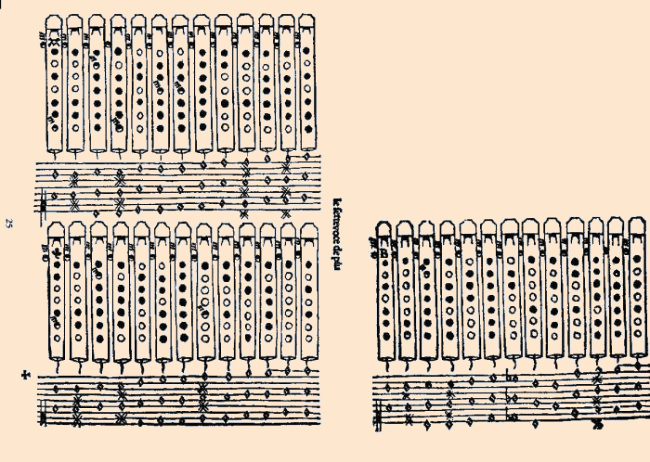PHILIPPE BOLTON
HANDMADE RECORDERS & FLAGEOLETS

HISTORICAL RECORDER FINGERING CHARTS
Virdung
The fingerings that can be used on the recorder depend on the instrument's design, profile and proportions, which have considerably evolved over the centuries. In the beginning of the Renaissance, musicians used a range of less than 2 octaves. This chart published in Basel by Sebastian Virdung in 1511 shows the holes to open and not those that must be closed for each note, from the bottom of the recorder upwards. The three commonly used recorders are shown here together.
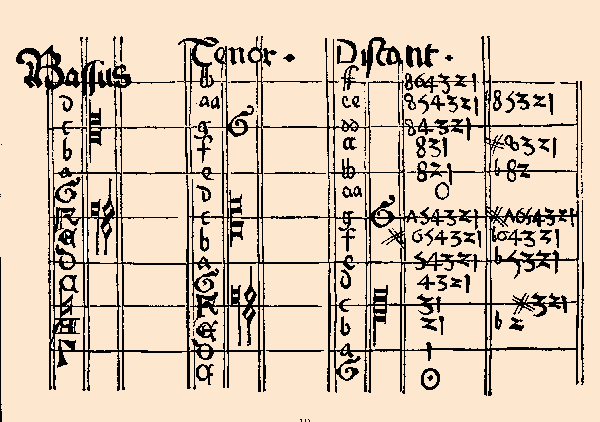
The figures on the right indicate the open holes, upwards from the bell (0) ,the lowest hole (1), to the thumb hole (8).
Ganassi
Sylvestro Ganassi published his treatise , La Fontegara in 1535. There are six charts showing fingerings within the normal range of the instrument, one octave ane a sixth. Because of their more conventional presentation they are easier to interpret than Virdung's, showing the holes to close for playing each note rather than those to open..
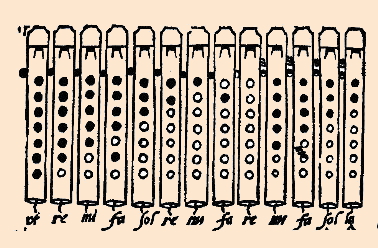
 = leaking or partially closed hole.
= leaking or partially closed hole.
Ganassi experimented with his own instruments, and the following charts, also contained in his treatise, La Fontegara, show notes above the normal range for the time. These 3 charts apply to 3 recorders from different makers (cf the maker's mark on the first of each series). There are differences from one instrument to another, and somme notes are missing. They are not the same as modern fingerings. In each chart the first on the left is for F natural on a recorder in G (B♭ on a recorder in C). The third is for high G on recorder in G (high C on a recorder in C).
Virgiliano
Here is another later chart (Aurelio Virgiliano, ca 1600), which refers to a similar type of instrument to Ganassi, with a range of less than 2 octaves.
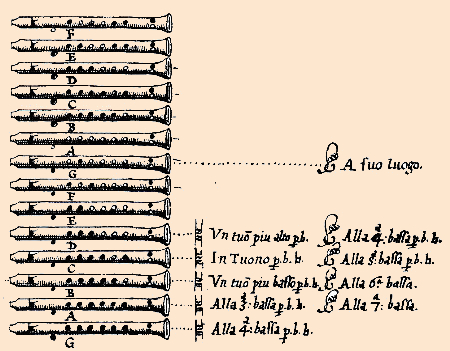
Jambe de Fer
From the middle of the 16th century onwards, recorder design seems to have evolved, giving a range of 2 octaves or more. This chart, contained in Philibert Jambe de Fer's Epitome Musical of 1556, is the first printed reference to fingerings similar to those of our modern recorders.
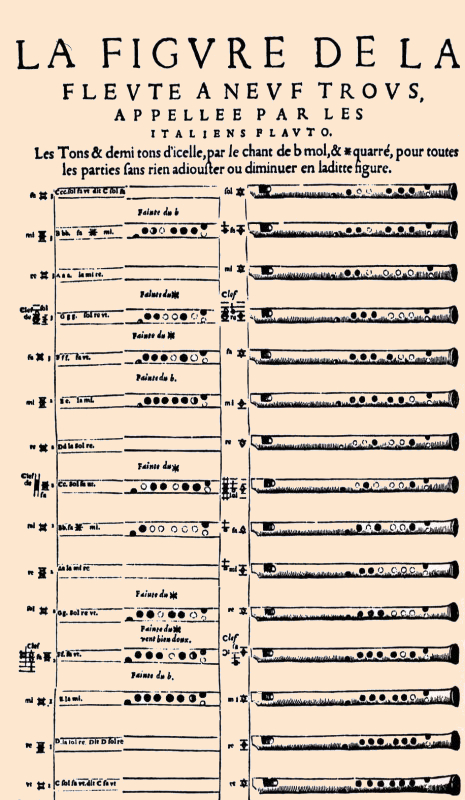
Mersenne
We find similar fingerings in Mersenne's Harmonie Universelle published in 1636. Apart from a few exceptions, they are fairly close to those of our modern recorders.
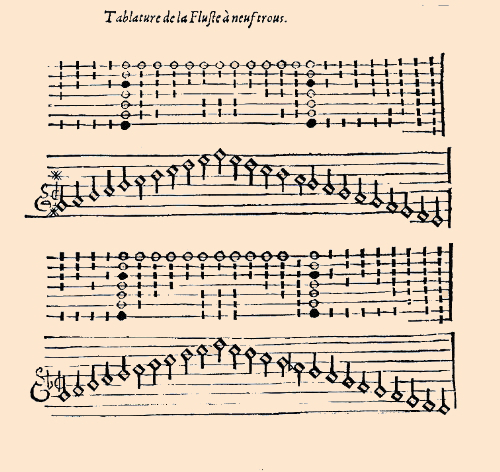
Blankenburgh (van Eyck)
In a text published with der Fluyten Lust-Hof of 1646, Blankenburgh gives descriptions (but no chart) of fingerings for a recorder of van Eyck's time. These are unusual, since half holes are often preferred to fork fingerings, or used to make a distinction between sharps and flats.
Two of the fingerings are particularly interesting, those for high b and c (recorder in c), for which here is the text:

|
In the upper octave b is played in the following manner : for the upper hand the thumb hole is more than
half closed, the first hole is closed ; for the lower hand the holes
for the index, middle and ring fingers are closed. This is a 2nd register note.
High c is played in the following manner : for the upper hand the thumb hole is more than half closed, the first hole is closed; for the lower hand the holes for the index, and middle fingers are closed. This is a 3rd register note. Blankenburgh does in fact give the same fingering for b as Ganassi and Virgiliano, whereas his high c is a 3rd register note as in Mersenne. These 2 notes are both easy to play, even in fast passages. Some pre-baroque recorders can play both Bankenburgh's 2nd register fingering for b and Mersenne's 3rd register fingering for the same note. |
The same fingerings in chart form: 
|
Bismantova
Here is the first chart for a baroque type recorder, by Bartolomeo Bismantova, dating back to 1677. The fingerings are for a recorder in g, which had remained a solo instrument in Italy.
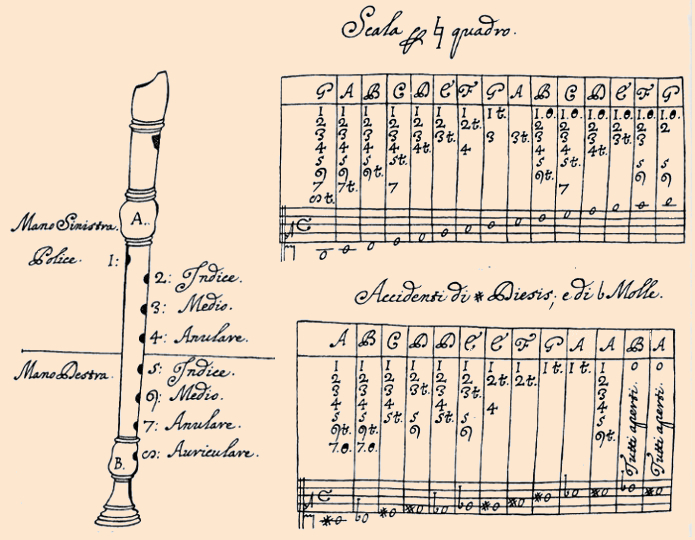
The figures indicate closed holes (1 = thumb hole, 8 = bottom hole or little finger of the right hand)
Freilhon-Poncein
Freilhon-Poncein's LA VERITABLE MANIERE D'APPRENDRE A JOUER EN PERFECTION DU HAUT-BOIS, DE LA FLUTE ET DU FLAGEOLET was published in 1700. It contains three fingering charts for the recorder (flûte). The natural notes, sharps and flats are shown in different tables . A part from b and b flat, the fingerings are the same as those of our modern recorders, over a range of two octaves and one note (from f1 to g3). There is no f#3. The fingerings for the sharps and corresponding flats are the same. The next to last hole is often closed, probably as an aid to holding the instrument.
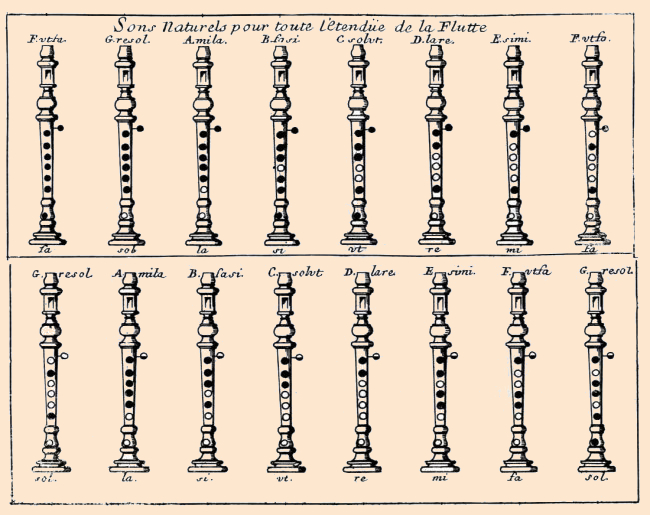

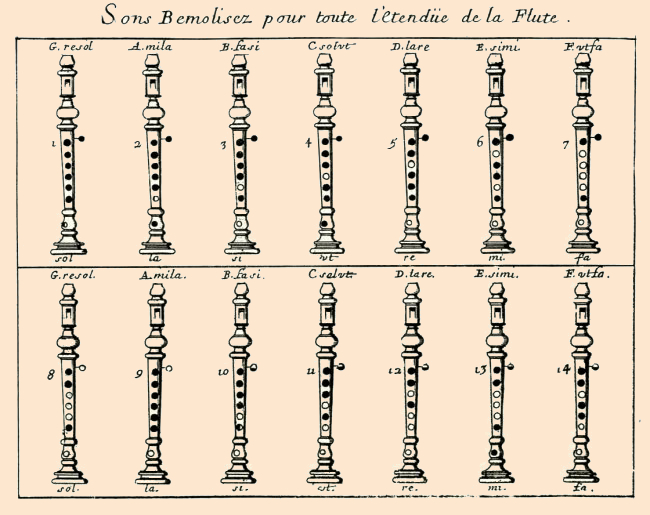
Hotteterre
This chart is probably the best known or the fingering charts of the baroque period. It belongs the Jacques Hotteterre-le-Romain's treatise, published in 1720. The fingerings are similar to those of Freilhon-Poncein.
Les doigtés de base
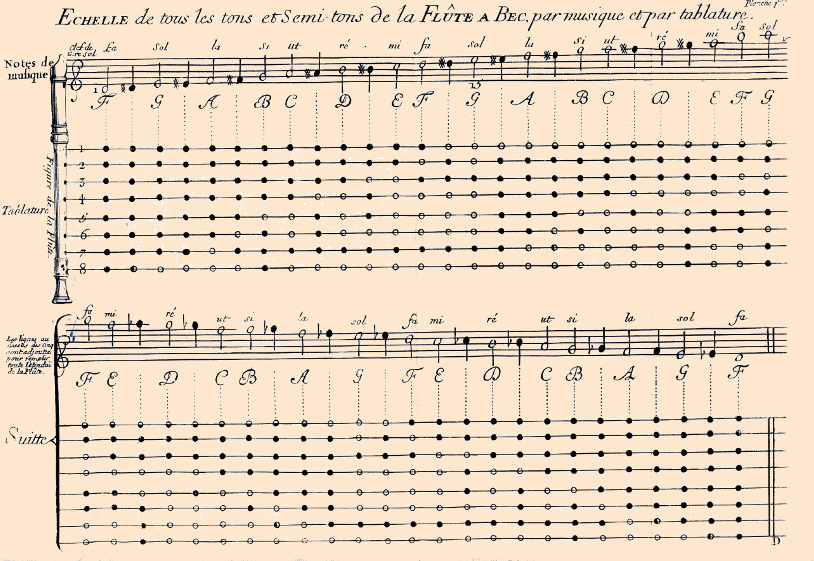
Les doigtés pour les tremblements
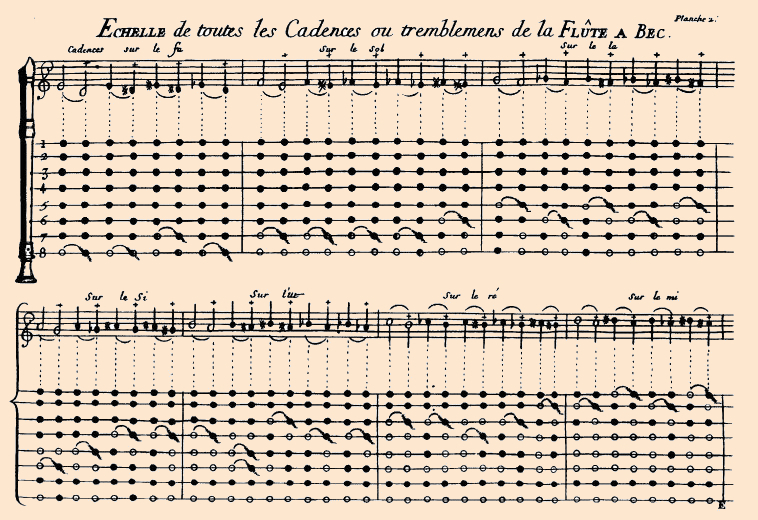
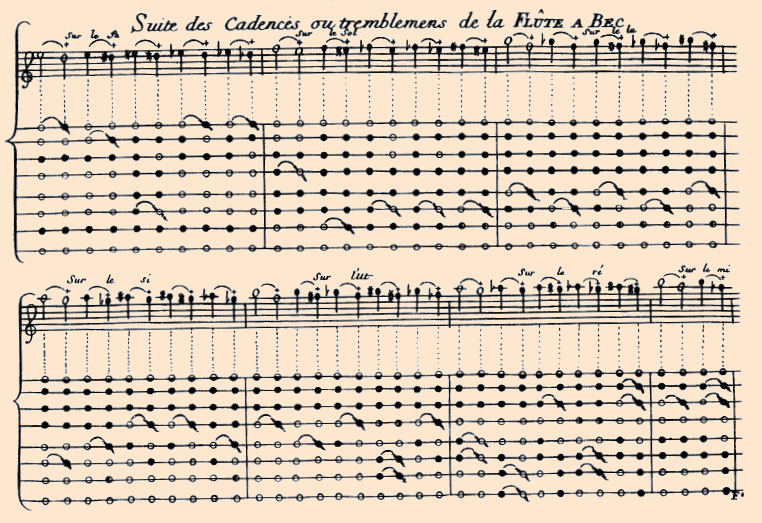
The English methods
Several tutors for the recorder (common flute) were published in England during the 18th century. They usually contained fingering charts like this one, from The Muses Delight by John Sadler (1754).

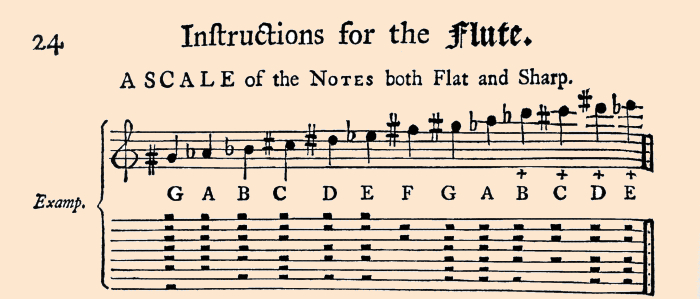
The term pinch'd Notes refers to the partially opened thumb hole for playinghigh notes.
Stanesby
Here is a fingering chart for a recorder in c, published by Thomas Stanesby Junior around 1732 in his pamphlet on the tenor recorder called "A New System of the Flute À Bec". It makes a diference between sharp and flat notes, and also includes a fingering for the difficult high c#.
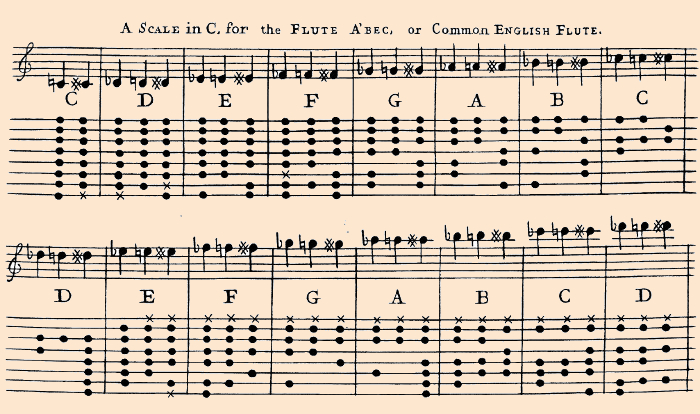
x = partially closed hole
Note: There may be a mistake in one of the fingerings given for f in this chart. For the octave to be in tune, the forks are normally not identical in both registers.
If low f is correct, the next to last hole should only be partially closed for high f (as in Hotteterre fingering).
If, on the other hand, high f is right the bottom hole should be closed as well for low f (as in modern fingering).
